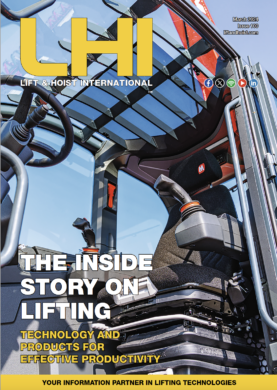SPMT for Safer Spent Fuel Cask Transportation
Wheelift Systems, Waverly, Iowa, has highlighted safety and efficiency advantages of a new product designed for spent fuel cask transport and alignment for NUHOMS-type ISFSI installations (NUHOMS is the registered trademark of TransNuclear Inc. and its parent company, AREVA). The Wheelift Self-Propelled Modular Transporter (SPMT) reduces worker exposure by requiring fewer persons to operate, align and insert the cask.
Only one person is needed to operate the transporter from as far as 30 to 50 feet away. The transporter’s omni directional steering and 10-inch lift capability allows the same operator to perform alignments remotely to within 1/32nd of an inch and eliminates the need for an independent leveling and alignment system. The transporter uses an onboard diesel driven generator to supply the transporter’s electric power. This generator also provides power for the transfer cask ram’s hydraulic power unit.
An alternative shore power connector is available for near silent operation as a back-up system while aligning and loading spent fuel. The Wheelift transporter utilizes a custom designed cask support skid on top of its deck with the push cylinder fitted with an electrically actuated grapple to eliminate the industry norm’s possibility of a broken hydraulic line that could potentially contaminate the HSM.
Constellation Energy’s Ginna Nuclear Plant in upstate New York was the first to use the Wheelift transporters in its NUHOMS spent fuel storage operations. "The degree of added safety, fast precision alignment and effortless movement throughout the process has totally changed our approach to spent fuel handling," said Bryan Flynn, project manager for the Ginna ISFSI project.
The Wheelift SPMT’s omni-directional travel capability allows increased maneuverability in tight spaces. Because each axle and wheel is independently controlled, the transporter can travel forward, backward, laterally, obliquely and rotate about any point fully loaded. This capability allows for greater storage density and utilization of the space needed for ISFSI storage facilities without losing the ability to easily align the NUHOMS casks with the HSM. Tug and trailer technology typically requires 70 feet of space between the HSM modules.
"We are currently looking at making alternative skids for our refueling outage, to be able to move other heavy components with the transporter," Flynn added.










